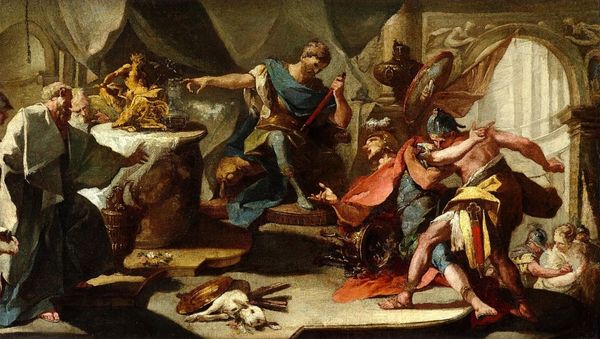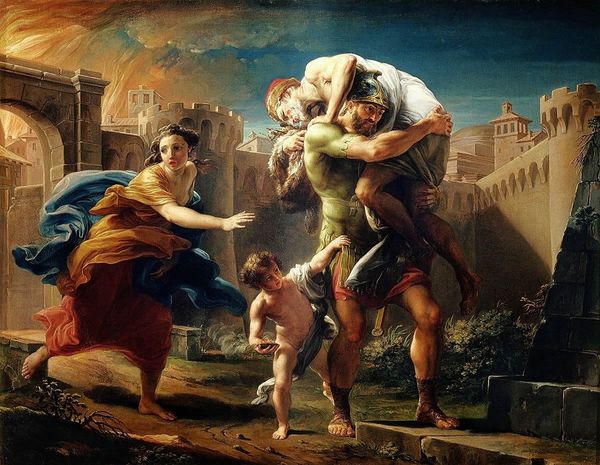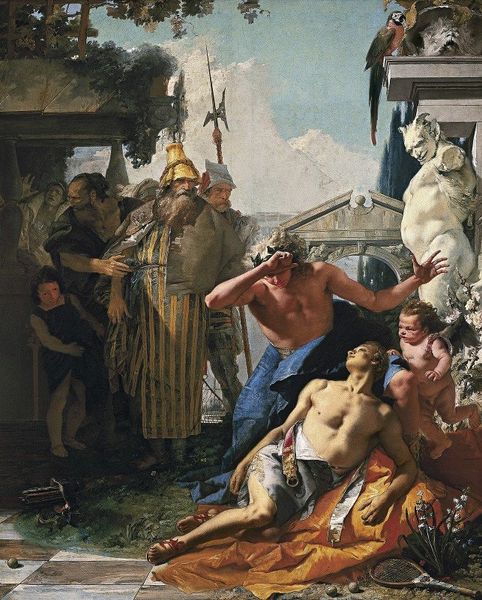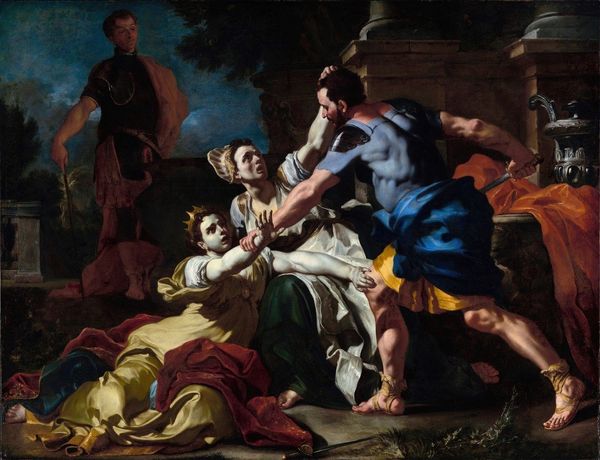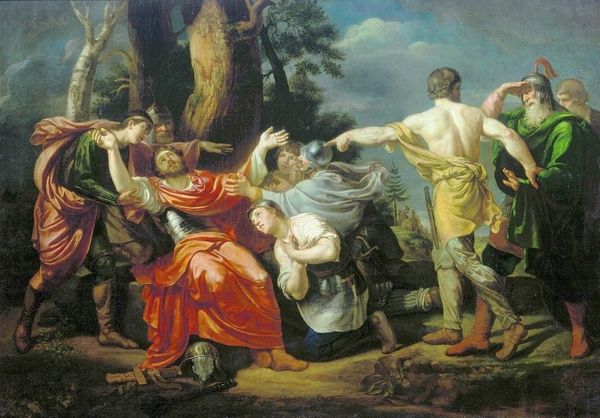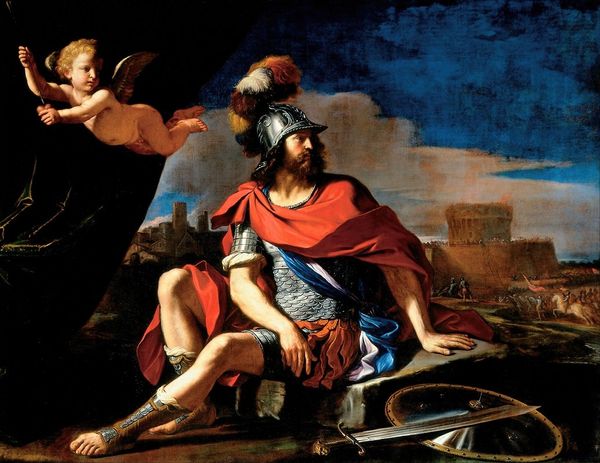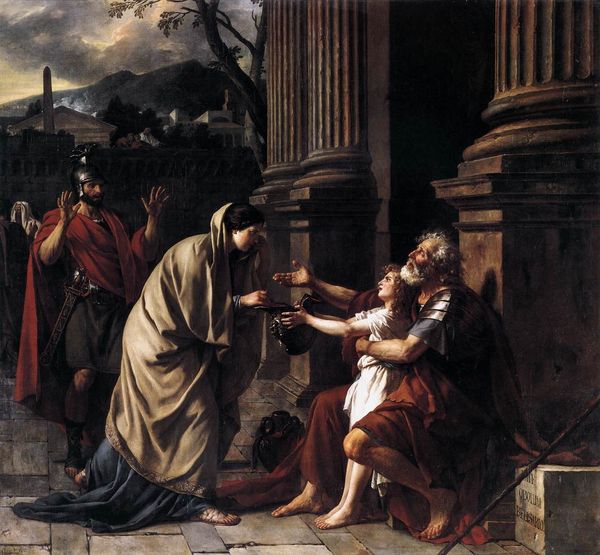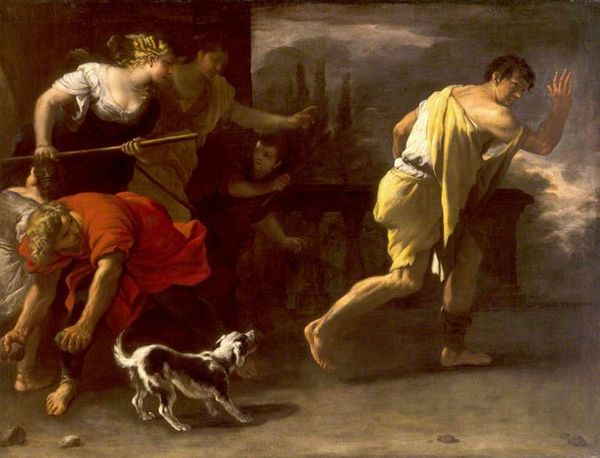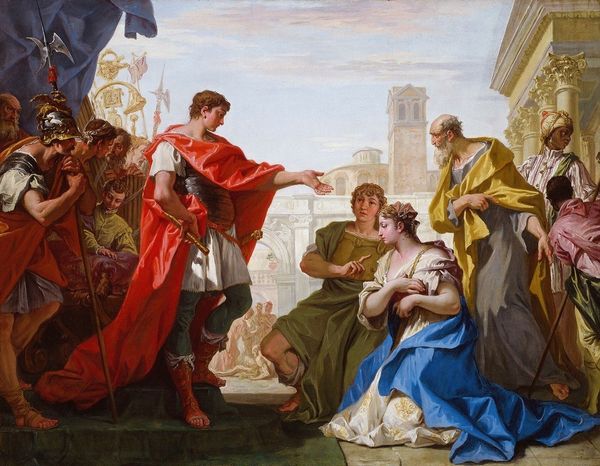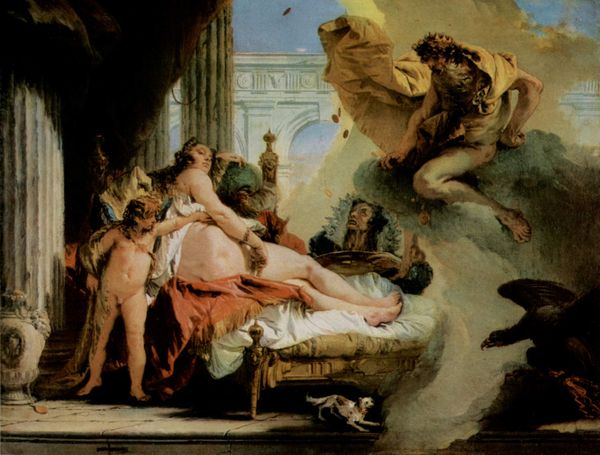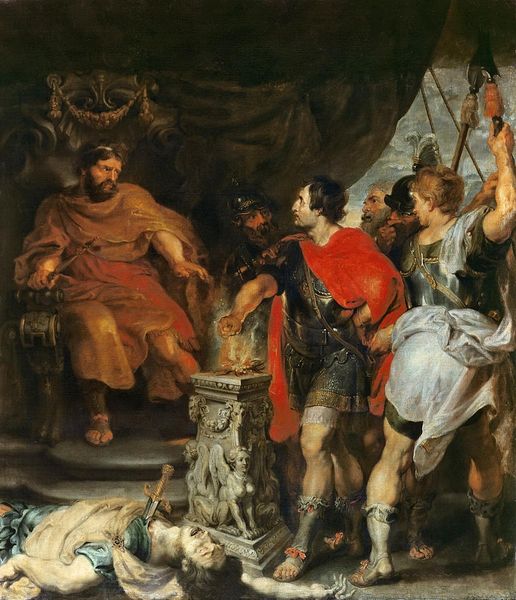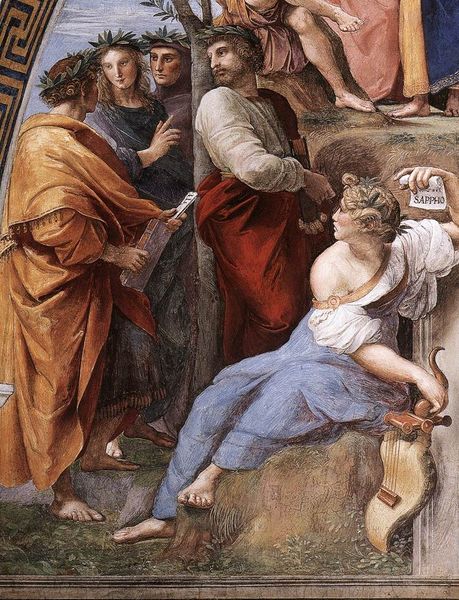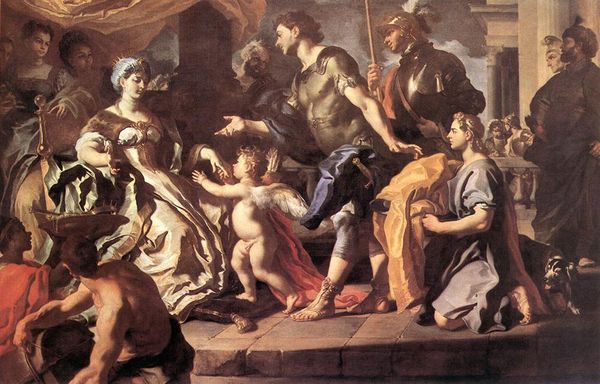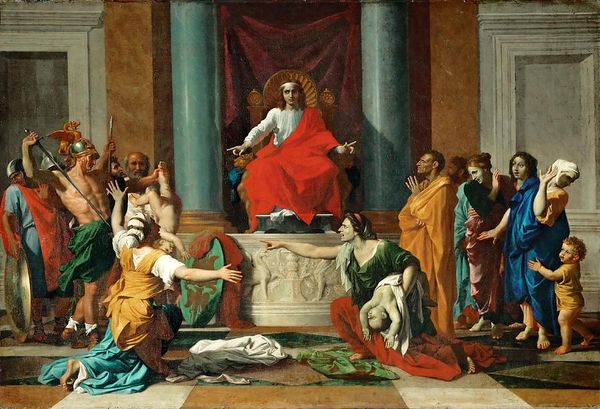
oil-paint
#
figurative
#
allegory
#
baroque
#
oil-paint
#
figuration
#
oil painting
#
genre-painting
#
history-painting
Copyright: Public Domain: Artvee
Curator: Sebastiano Ricci's "Tarquin the Elder Consulting Attus Navius," created around 1690, offers a captivating glimpse into Roman legend through oil paint. Editor: It strikes me as stagey. All that drapery—heavy on the crimson, isn't it?—gives the figures a monumental, theatrical feel, though somewhat static overall. I'm thinking of the texture and cost of creating such a surface. Curator: The drama stems from the tale itself: Tarquin, seeking confirmation for his royal ambitions, tests the seer Attus Navius with an impossible task—splitting a stone with a razor. Attus succeeds, legitimizing Tarquin's future kingship. Look closely at the symbolism in the details here: the stone column, split neatly by Attus; and consider the laurel wreath crowning Tarquin... they are very deliberate emblems of authority and destiny. Editor: Interesting… but focusing on the split stone, the act of breaking seems to hold the central significance. Considering it's rendered in paint, we must examine the production behind it. The material quality is not of 'stone' but, well, of layers of pigment—what a way of conveying materiality with materiality. Curator: It’s not just about material imitation but also how Ricci uses those very tangible qualities of paint to convey the weight and importance of divination and authority in that era. The figures—each face, gesture, and costume—reflect broader political and spiritual beliefs. It tells of a turning point, a cultural belief that power could be legitimized through such encounters with the supernatural. Editor: And how was this authority crafted? Someone mixed these pigments. Ground them. And it required considerable resources to be brought here together in support of, not just illusion, but a persuasive image of authority, power, and legitimacy. The means are always essential to interpret an image, in my view. Curator: Absolutely! Whether focusing on symbolic or material significance, the artwork offers an illuminating point to question the meaning we attach to signs of leadership and how art both embodies and disseminates it. Editor: Right—examining how images gain power as representations reveals their tangible realities of labor, resources, and the craft through it. It is how the visible world reflects something further.
Comments
No comments
Be the first to comment and join the conversation on the ultimate creative platform.
